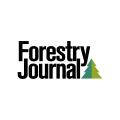
Arb Innovators demonstrate the power of creating 3D models in arboriculture.
THE world is abundant, arguably now more than ever, and technology is more accessible than ever before.
Thanks to advancements in tech over the last decade and assisted by the rise of better cameras on smartphones, including LiDAR-enabled smartphones (or pocket-sized powerhouses) which have more processing power than the desktop computers many of the millennials reading this will care to remember, taking trees from 2D to 3D using a technique called ‘photogrammetry’ is easier than ever.
THE POWER OF PHOTOGRAMMETRY

Photogrammetry, a technique with roots tracing back to Leonardo da Vinci’s sketches and refined in the mid-19th century by French officer Aimé Laussedat, considered the father of photogrammetry, who used terrestrial photographs to create his first perspective architectural survey at the Hôtel des Invalides in Paris, has evolved into a powerful tool in arboriculture.
Unlike LiDAR (Light Detection and Ranging) which uses structured laser light to measure refraction from point locations in a scene, photogrammetry uses multiple images from different angles to create a 3D model of an object. Think of it as piecing together a giant jigsaw puzzle where each photograph is a jigsaw piece, and the software stitches them into a comprehensive, solid model.
TRANSFORMATIVE POTENTIAL

Photogrammetry gives us the ability to transform static photographs into reasonably accurate, fully textured, immersive 3D models. In doing so, we can achieve:
• Accurate representations: detailed models that reveal the intricate structure and potential risks of trees.
• Enhanced examination: 3D models allow for thorough examination of trees post-survey, identifying risks, fungal presence, or structural concerns which may have been missed.
• Visual aids for clients: 3D models simplify difficult interpretations and technical descriptions in reports, increasing client engagement.
• Ongoing monitoring: digital archives allow for tracking changes in tree health and structural condition over time.
• Conservation efforts: digital replicas of ancient and veteran trees help preserve their legacy for future generations.

What it comes down to is this – photogrammetry can turn raw data into immersive, interactive 3D models, improving the way we collect survey data, enabling us to share findings in a dynamic way and increasing your clients’ understanding of their trees.
Beyond the confines of arboricultural consultancy, photogrammetry opens up exciting possibilities for teaching, learning, and public outreach, particularly when the models are viewed in virtual reality (VR).
My journey into photogrammetry is fuelled by a passion for technology and problem-solving. I’m not an expert – at least not yet. I don’t care to ever consider myself an expert in anything. What drives me is the desire to push the boundaries of what’s possible with the resources at hand.
That’s why at Arb Innovators, we embrace low-cost, accessible solutions. To create 3D models, we use a range of tools and software but, in the field, we typically use smartphones paired with specialist 3D photogrammetry apps (like Polycam or RealityScan). Remember, we’re not positioning ourselves as a leading photogrammetry company, our entire ethos involves the use of accessible tech using methods we can deploy in the field – ideally at little to no extra cost to our clients, or us. We’re a startup after all.
Perhaps the big advantage with apps like Polycam is that all processing is done via their servers, and you don’t need standalone software. This makes it accessible and practical for daily use in the field.
Photogrammetry isn’t new, but its application in arboriculture is growing with potential and allows us to capture the essence of trees in unprecedented detail.
VISION FOR THE FUTURE

Looking ahead, the integration of 3D models, VR, and augmented reality (AR) in arboriculture holds immense potential. VR can transform the way we engage with trees. It’s not just about seeing a tree; it’s about experiencing it. Imagine conducting virtual tours of ancient trees or training the next generation of arborists through immersive VR experiences.
Beyond its use for those already in the industry, we can bring the beauty and complexity of trees to a wider, public audience by showcasing these detailed 3D models in VR, fostering a deeper appreciation and understanding of arboriculture.
The possibilities are endless, and we are just beginning to scratch the surface.
Photogrammetry is more than a tool. It’s a vision for the future of arboriculture.
So, if I’ve convinced you to scan a tree, now what? What do you do with those 3D models afterwards? How do they fit into your workflow?
Well, I invite you to join me on this journey. If you would like the answers to some of these questions, follow me on LinkedIn where I explore and share my ideas and hot takes in the world of 3D modelling and arboriculture. I also regularly break down how to get the best results conducting photogrammetry on trees and vegetation and give my thoughts on how 3D models could pave the way for conveying greater insights in various aspects of arboriculture.
By combining the power of photogrammetry with the immersive experience of VR and AR, we are not just capturing trees; we are creating a digital legacy that will inspire and educate future generations. Remember, the world is abundant with technological possibilities. Photogrammetry is one of the most promising tools at our disposal, offering new ways to visualise, understand, and preserve the natural world.
The future of arboriculture is here, and it’s three-dimensional.




Comments: Our rules
We want our comments to be a lively and valuable part of our community - a place where readers can debate and engage with the most important local issues. The ability to comment on our stories is a privilege, not a right, however, and that privilege may be withdrawn if it is abused or misused.
Please report any comments that break our rules.
Read the rules here